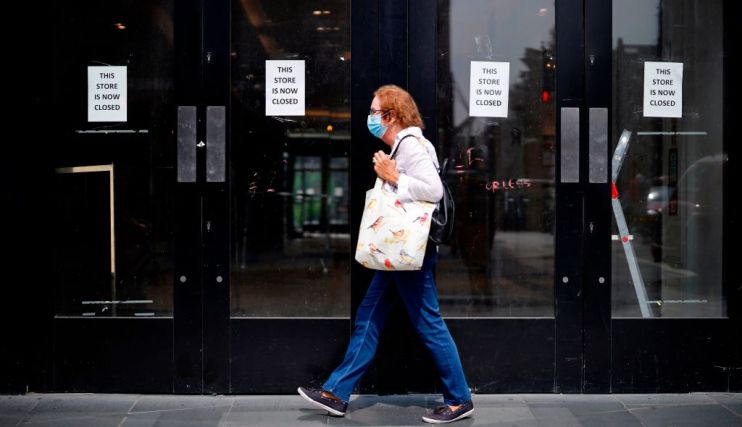UK economy: Footfall at highest level since March but job postings fall

The number of Britons venturing out to shops and restaurants rose to its highest level since March, with footfall running at two-thirds of the level seen a year ago, new figures have shown.
However, the Office for National Statistics’ (ONS) said one in ten UK businesses reported they were at “moderate” risk of insolvency, indicating the risks to the economy. And the number of online job adverts fell in the week to 14 August.
The government gradually lifted coronavirus restrictions in May, June and July. At the start of July, pubs, cafes and restaurants were allowed to reopen. And the Treasury has encouraged the public to spend with discount vouchers.
There have been some green shoots in the economy, with the Bank of England citing positive payments data. However, many sectors are still struggling and job cuts are picking up speed. Marks & Spencer, Boots and John Lewis are among the big retailers to have slashed thousands of roles.
Footfall levels – the number of people visiting retail areas – are still well below normal. But they have been steadily climbing, the latest ONS data showed today.
Retail parks have seen the strongest recovery, with visits in the week ending 16 August running at 85 per cent of the level seen a year ago.
Shopping centres and high streets were less well visited, with footfall at just over 60 per cent of the same time a year ago.
That took total footfall at all locations to 68 per cent of the same time a year ago – down 32 per cent on the year but the highest level since mid-March.
Firms worried for future amid weak UK economy
Despite the increase in activity, firms remain worried about their future. One in ten said they were at “moderate” risk of insolvency, while one per cent said the risk was “severe”, the ONS said.
The ONS also said online job adverts had fallen, indicating that companies are reluctant to hire. The total volume of job adverts in the two weeks to 14 August fell from 62 per cent to 58 per cent of its 2019 average, the ONS said.
However, the statistics body said the fall was only “partially offsetting the large increase of the previous week”.
Separate ONS data showed that 12 per cent of the UK workforce was on furlough leave in the two week to 9 August. That was down from 14 per cent in the two weeks to 26 July.
The government will wind down the furlough scheme in October. It pays 80 per cent of the wages of workers that may otherwise be laid off, but employers have been expected to contribute from August.
Opposition parties and business groups have called on the Treasury to extend the scheme or offer targeted support to sectors such as hospitality which have been battered by coronavirus.